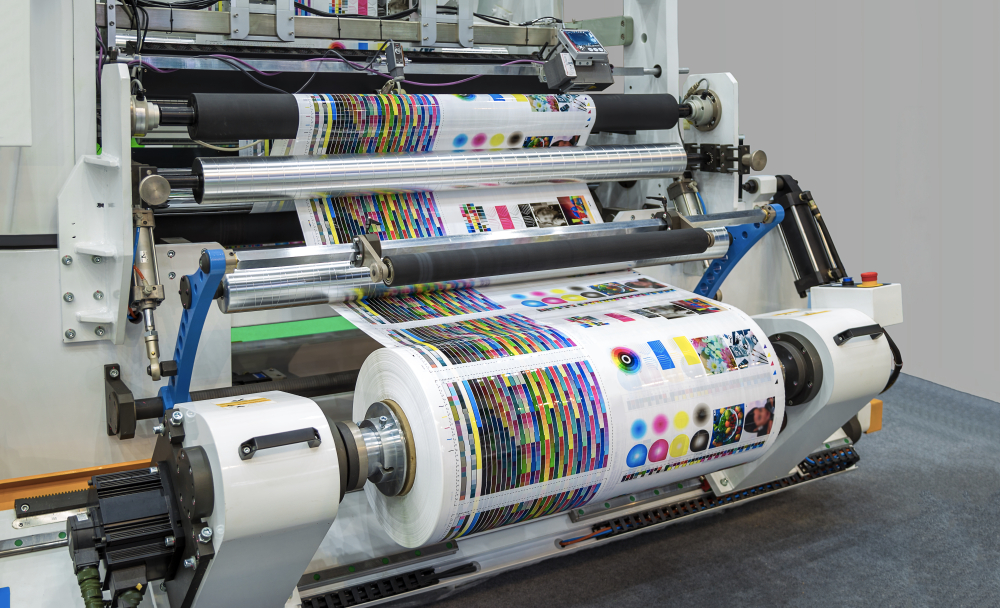5 Types of Packaging Printing Techniques: A Comparative Guide
With retail and ecommerce markets becoming increasingly competitive, brand owners face the imperative to innovate and surpass rivals in various market scenarios. Beyond investing in comprehensive marketing strategies or fortifying in-house customer service teams, businesses discover an avenue for achieving sales quotas—meticulously crafted product packaging.
This entails a fusion of functionality and aesthetics, where graphics and text not only serve a utilitarian purpose but also possess the potential to stand out on shelves and translate into purchases.
The impact of packaging on short-term and long-term profits cannot be overstated. Brands that harness the full potential of product packaging design can convey information effectively while seizing (and holding) consumers’ attention.
This comparative guide aims to unravel the intricacies of various packaging printing methods to empower your brand to make strategic packaging decisions.
Types of Packaging Printing Methods
In a packaging design process, you’ll need to compare and contrast the various printing methods suitable to your product. There are several packaging printing techniques available, and each of them fits different end-use applications.
1. Flexography
For several decades, flexographic printing, commonly referred to as “flexo,” has stood as the preferred method for high-volume product labels and flexible packaging production, particularly in the food and beverage industry. Renowned for its adaptability, flexo employs a flexible relief plate made of rubber wrapped around a cylinder for seamless and efficient printing.
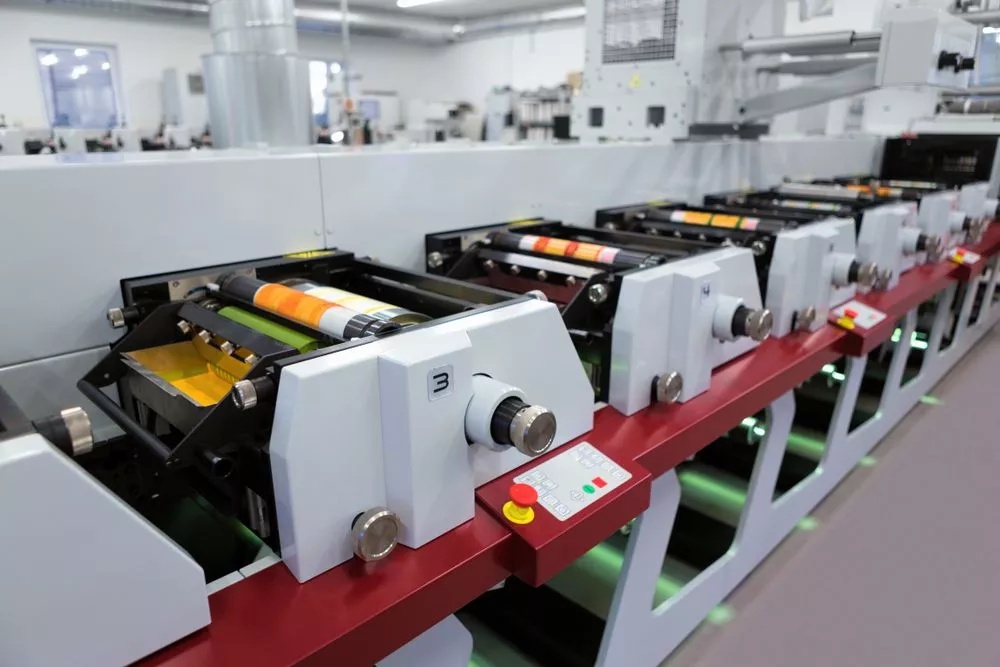
In the flexography process, an anilox roller, a cylinder with microscopic “cells” made of metal or ceramic, transfers ink to the relief plate. As the plate contacts the substrate, the image is transferred at high speeds and low operating costs. Continuous advancements in flexography have introduced greater automation and improved quality that can now rival traditional offset printing.
Advantages
Flexography emerges as a cost-effective solution for extensive print runs with fewer printing constraints. Its versatility shines, allowing the printing of almost any shape or format—unlike lithography, which necessitates a flat substrate. Ideal for high-speed manufacturing lines, where labels adhere to roll-formed products instead of sheets, flexography excels in achieving high-quality print images and offers the potential for perfectly matched spot colors.
Disadvantages
While flexography proves optimal for companies seeking cost-effective solutions, it does present challenges.
Serialization and unique codes can be cost-prohibitive in traditional flexographic printing, especially for low-volume jobs with numerous SKU or design variations. Lower-cost flexographic print providers may struggle to achieve the crisp print quality needed for intricate designs, smooth color gradients, and accurate representations.
As companies weigh the benefits, the limitations of flexography must be carefully considered based on the specific requirements of the packaging project at hand.
2. Lithography
Lithography, also known as offset printing, finds widespread application for large or flat items such as custom folding cartons, corrugated packaging, and expansive labels used in packaging and retail displays. In the litho printing process, the image is meticulously set onto an aluminum plate and subsequently transferred to a rubber blanket for processing.
The final step involves the image being printed onto a substrate, with the option for additional finishes such as coatings or varnishes to enhance appearance and provide protective layers.
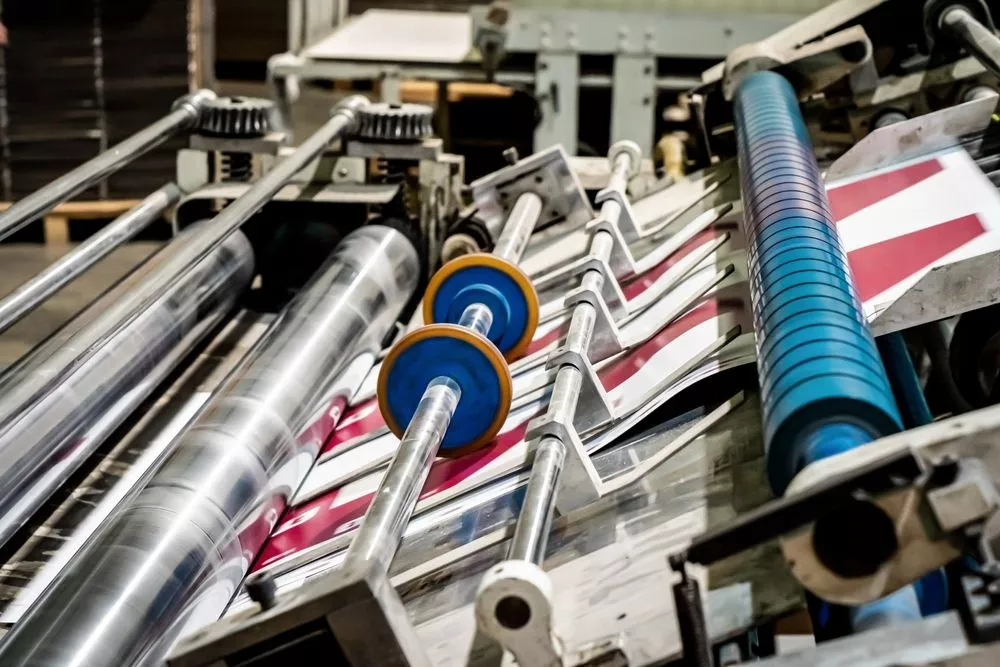
Advantages
Lithography stands out for its versatility in printing small to large format sizes, making it well-suited for high-volume production with intricate graphics. Often hailed as the quality standard in package printing, offset litho sets a benchmark against which other processes are measured.
Notably, color-matching achieves exceptional accuracy, and the option for post-print finishes, such as gloss coating or foil embellishment, adds a touch of luxury and quality. In addition to the superior quality and diverse finishing options, offset litho boasts fast printing speeds, contributing to efficient production.
Disadvantages
Lithography’s custom-made aluminum plates contribute to relatively higher costs, particularly in shorter print runs. Regardless of volume, most print providers impose setup fees for plate production. This plate cost, coupled with the inherent customization challenges, renders lithography printing cost-prohibitive for brands seeking short runs or versioning.
3. Gravure
Gravure printing engraves designs onto metal cylinders. Each cylinder corresponds to a specific color, and the printing machine meticulously applies ink, slowly generating a high-quality image. Primarily recommended for detailed packaging designs, gravure is a prevalent choice for food products packaged in flexible materials.
Advantages
Gravure’s superior image quality and durability give it an advantage in ultra-high volume print jobs where lithography and flexography would be slower and prone to reduced image quality over time. Strategic collaboration with a reliable custom packaging supplier enables production at high speed and low running costs, all without compromising quality.
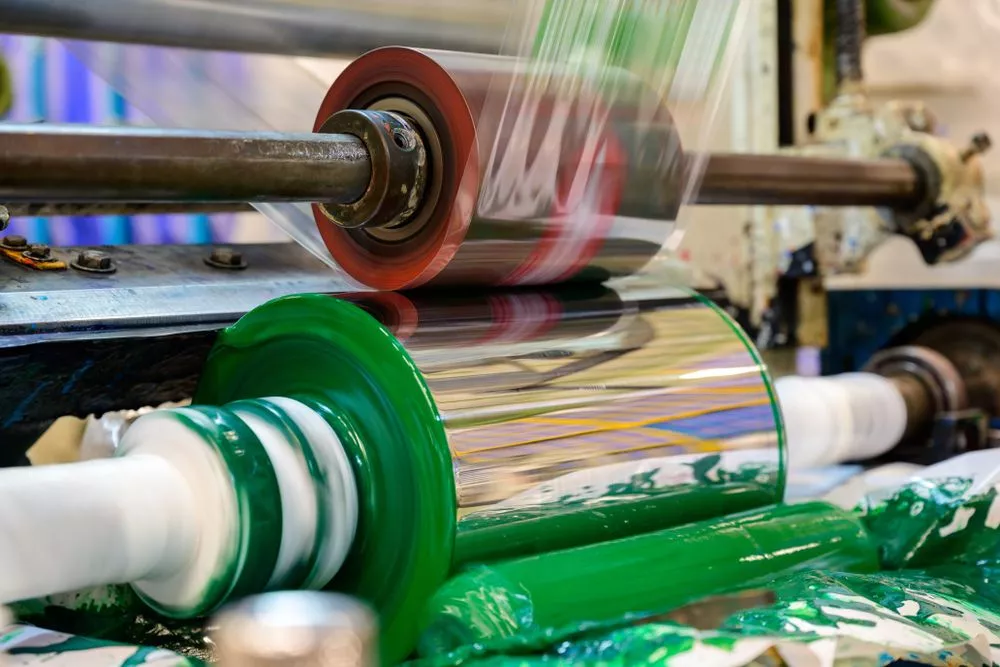
Disadvantages
Gravure printing presents challenges for projects with low print quantities, as its setup can be relatively expensive. The setup process for gravure print jobs is time-intensive, often spanning weeks and incurring costs in the tens of thousands of dollars. Consequently, gravure proves most effective for projects that involve millions of units with minimal changes to graphics or text copy.
Brands seeking versatility or those not producing packages in large volumes may find digital printing to be a more cost-effective and flexible alternative.
4. Digital printing
Digital printing has rapidly gained traction in product packaging, evolving and improving swiftly compared to traditional methods such as flexo, offset, and gravure. While relatively new, digital printing, particularly inkjet technology, is becoming a mainstream choice due to its faster speeds, lower running costs, and enhanced print quality.
Advantages
Digital printing’s versatility extends across various products and surfaces, with particular prominence in corrugated packaging and folding cartons. Once considered as complementary technology to conventional printing methods, digital printing has now emerged as a viable mainstream alternative for short-, medium-, and long-run packaging.
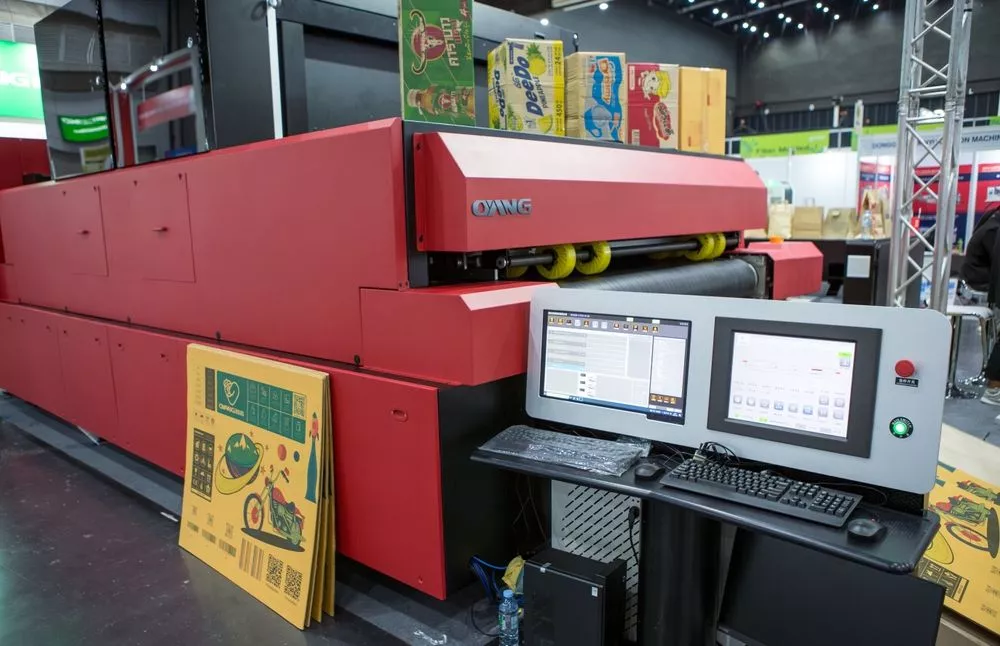
In lower quantities, digital printing proves more cost-efficient than its analog counterparts. Some printers offer hybrid flexographic/digital printing options, combining the precision of flexo with the variability of digital printing. Notably, digital printing excels in creating versioned images, variable data, and personalized packaging—embracing trends that have reshaped the packaging landscape.
Digital printing systems like the HP Indigo Digital Press showcase extraordinary quality on diverse packaging substrates such as flexible packaging, including shrink sleeves and labels. The technology enables mass customization, versioning, serialization, and efficient unique coding, providing brands with cost-effective solutions for tailored packaging.
Disadvantages
While digital printing excels in flexibility and efficiency for shorter runs, it may not match the unit economics of analog printing technologies in very long runs, ranging in the hundreds of thousands or millions. For extensive print quantities, flexo, gravure, and litho may offer more economically viable alternatives.
The reliance on combinations of tiny ink dots makes achieving a perfectly matched, smooth color challenging in digital printing. Brands that prioritize near-perfect color matching for logos or other brand elements may opt for other packaging print methods to ensure precise color reproduction. Understanding these trade-offs becomes crucial for brands seeking the optimal balance of packaging costs, customization, and print quality.
5. Screen printing
True to its name, screen printing creates designs using a woven silkscreen. Specific areas of the fabric are coated with a non-permeable material, leaving the rest open for ink application. Since the printing surfaces do not need to be flat, the method adapts to a diverse range of materials. This includes paper, fabric, glass, and metal, making it a versatile choice in the printing landscape.
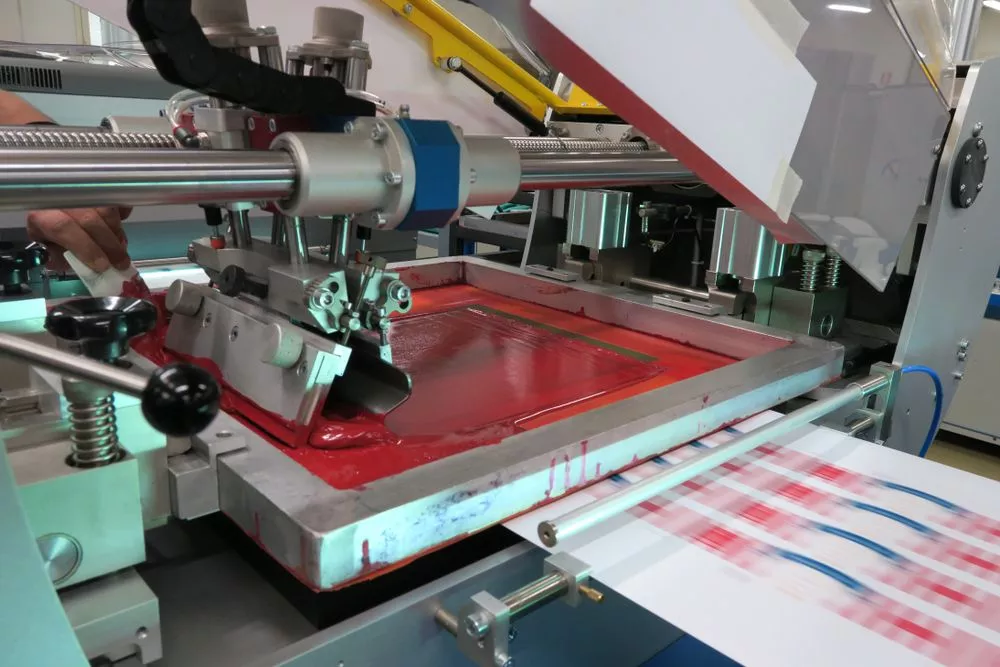
Advantages
Screen printing distinguishes itself by being best suited for small-scale jobs, offering a cost-effective solution with relatively low setup costs. Its adaptability to non-flat surfaces makes it suitable for various materials, providing flexibility in design and application.
Disadvantages
While screen printing proves economical for smaller projects, its production speed is not optimal for large-scale businesses. The method’s relatively slow production time may pose challenges for heavy-volume requirements. In such cases, opting for offset lithography, flexography, or gravure printing might be more conducive to meeting the demands of larger production quantities.
Packaging and Printing Done the Right Way
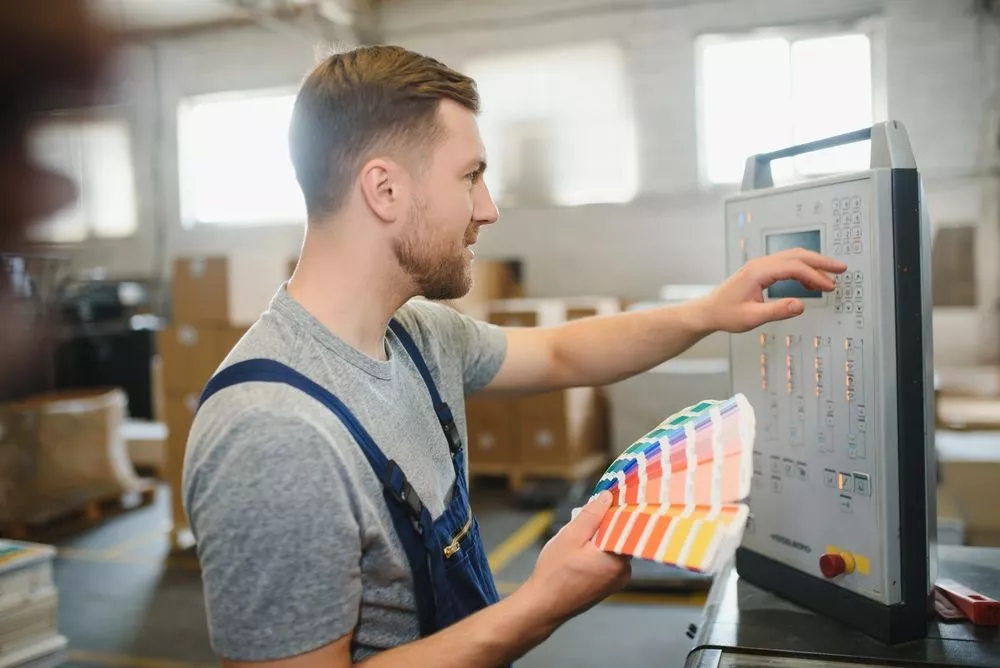
Each packaging printing technique brings its distinct advantages and challenges. There is no one-size-fits-all solution, and the key lies in understanding how each method operates to determine the best fit for your business. This knowledge empowers your brand to make informed decisions aligned with your specific packaging requirements, whether you prioritize cost efficiency, intricate design details, or production speed.
Should you find yourself navigating the complexities of packaging printing, consider consulting with experts in the field. Meyers has a team of seasoned professionals ready to cater to your unique printing needs.
Talk to our experts and start your journey to compelling custom packaging solutions. Discover the most fitting solution for your business, ensuring that your packaging not only meets industry standards but also stands out in a competitive market.

